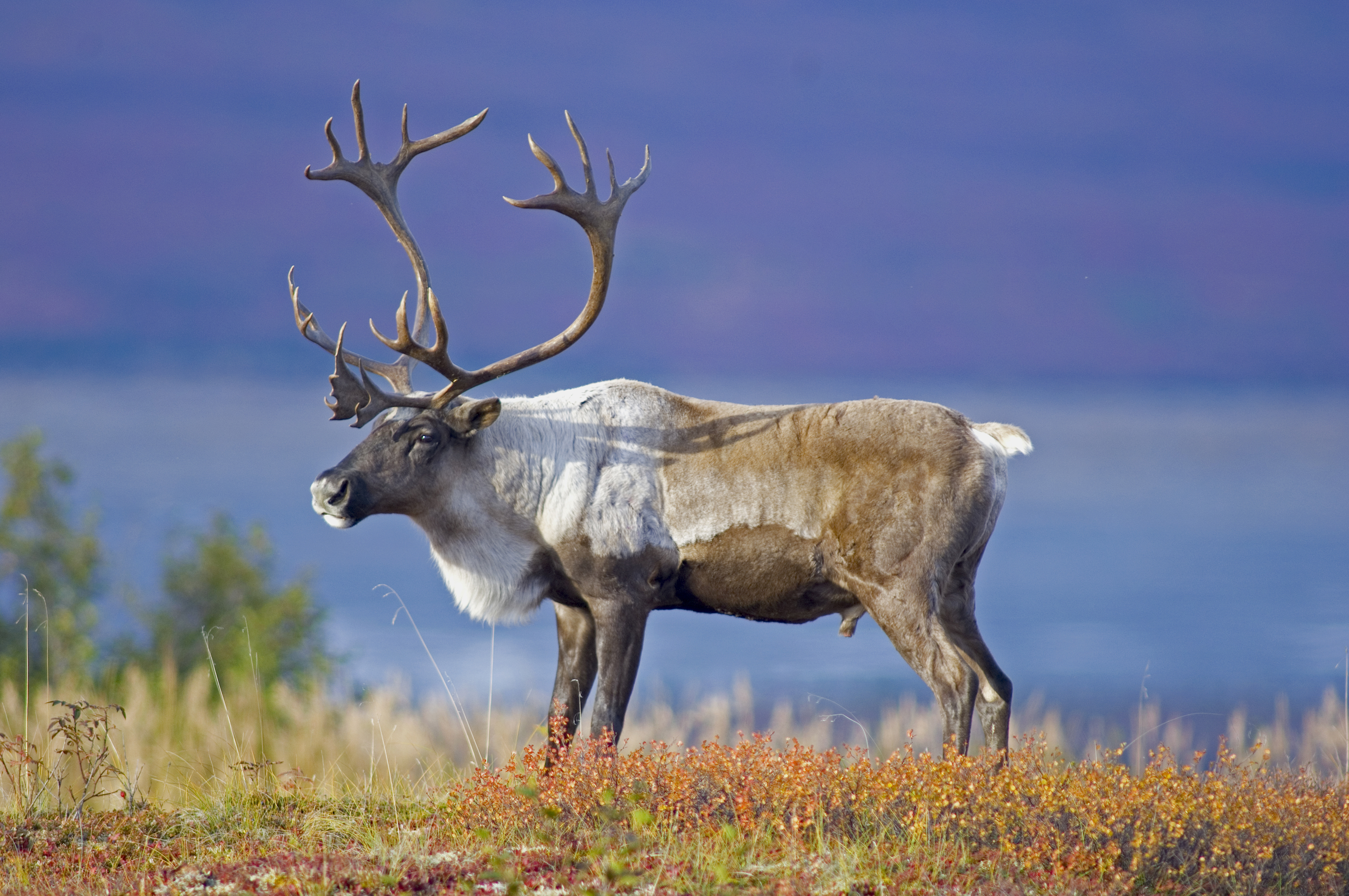Caribou << KAR uh boo >> is a large deer from Greenland and northern North America. Caribou and reindeer make up a single species (type) of deer, but scientists break up this species into subspecies. Reindeer subspecies are native to northernmost Europe and Asia.
Loading the player...Caribou grazing
A bull (male) caribou weighs from 250 to 700 pounds (113 to 320 kilograms), stands 4 to 5 feet (1.2 to 1.5 meters) tall, and measures 6 to 8 feet (1.8 to 2.4 meters) long. A cow (female) grows smaller than a bull. Cows give birth to one calf in late spring.
Caribou have broad hoofs to support them in deep snow and spongy tundra. For most caribou, their heavy coat is predominantly brownish or grayish in color. The animals possess broad antlers, and the male’s antlers grow much larger than the female’s. Female caribou and reindeer are the only female deer with antlers.
There are two main kinds of caribou—barren ground and woodland. Barren-ground caribou spend the summer in the Arctic tundra and the winter in the evergreen forests south of the tundra. They may occur from western Alaska to northeastern Greenland. In the western part of their range, they live in large herds. Woodland caribou grow slightly larger and darker than barren-ground caribou. They inhabit forests from the Canadian province of Newfoundland and Labrador to Canada’s Northwest Territories and down through British Columbia, northern Idaho, and northeastern Washington.

Roaming barren-ground caribou cover the land for days at a time. They do not overgraze their range because they keep moving from place to place. In summer, they eat mostly grass and shrub leaves. In winter, they live mainly on plantlike organisms called lichens. Some caribou migrate more than 3,000 miles (4,800 kilometers) from summer range to winter range, the longest known migration for any land mammal.
Loading the player...Caribou
